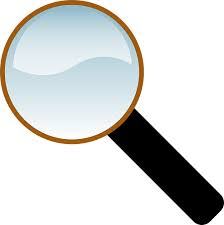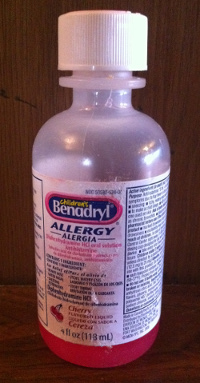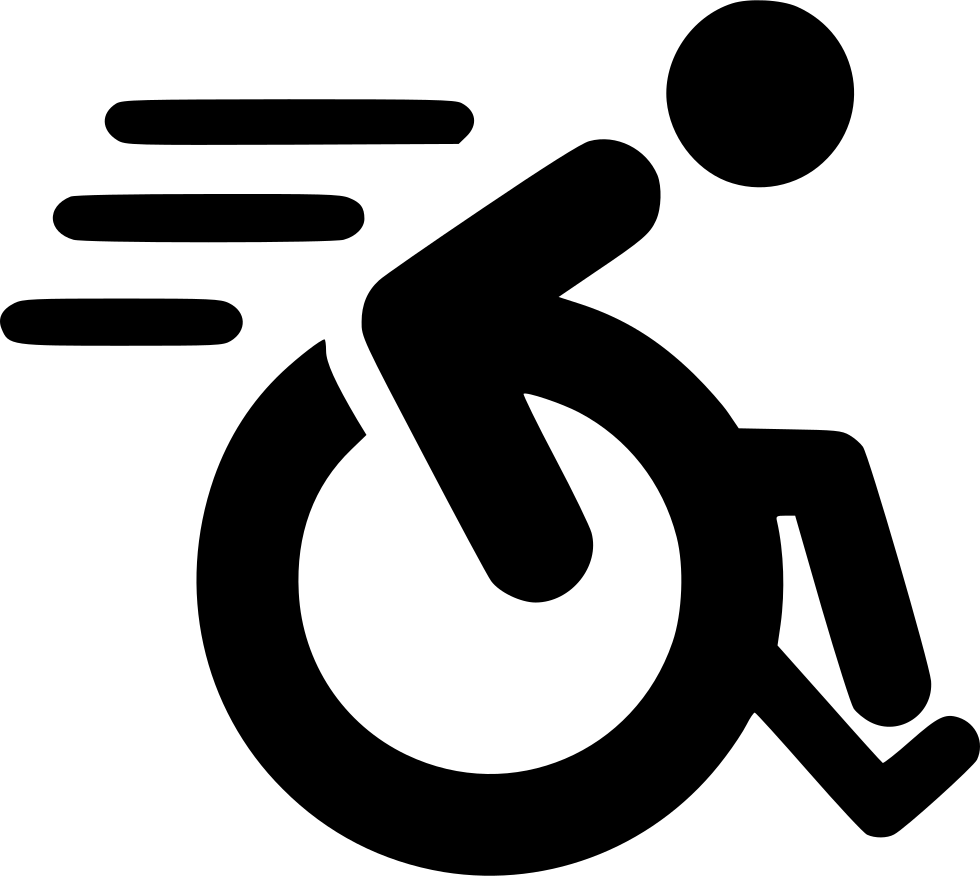Finding Your MCAD Triggers

As many of you know, we’re unfortunately finding Mast Cell Activation Diseases aka “MCAD” of all kinds (forms of masto or the newly recognized MCAS and even newer HaTS since 2016) to be relatively common in Ehlers-Danlos patients, which is why I’ve written about them at length.
I’m so grateful to Patricia Murray-Wood for following me as @Mastocytosis on Twitter back in 2012 helping me to fall down this additional rabbit-hole and explain a whole other chunk of my symptoms and life experience that didn’t make sense from a purely physical standpoint of a “genetic collagen defect” (aka EDS).
Like, how could defective collagen cause me to have anaphylaxis to iodine contrast dye and various anesthetics and bees? Or cause my blood pressure to suddenly drop, have hives or itch madly in response to various foods or chemicals? Among many others symptoms and issues. Here’s a partial list here:
- Hives (including from stress) and/or urticaria pigmentosa (a form of cutaneous masto)
- Easy flushing red of any part of the “mantle” (upper chest, neck, face), sometimes just in blotches
- Angioedema experienced as swelling sometimes with a bluish tint almost anywhere, but around lips, eyes, and belly are most common. Unlike gravity driven lymphedema it comes and goes, and isn’t usually bilateral. (I.e, the swelling around your ankles is likely lymphedema, secondary to weak tissues.)
- Esophageal spasms
- Sudden onset nausea, diarrhea or constipation (and quick flips between these) aka “IBS”
- Traditional allergy symptoms (itchy, runny nose, watery eyes, asthma, etc.)
- Sudden spikes and/or drops in BP
- Sudden shortness of breath, bronchospasm or unresponsive asthma (it doesn’t respond to inhaler, or your throat starts to swell shut and close off your airway)
- Sensitivity to alcohol, mold, heat, cold, stress, vibration, sounds and EMF
- Increased cerebral-spinal fluid pressure (“brain juice” headaches)
- Any and all signs and forms of low or high level anaphylaxis including sudden onset anxiety or irritability and other mood swings or sudden mutism especially in children
Non-Food Reactions

Again this is a very small, partial list of all the ways mast cell activation can afflict us. Dr. Lawrence Afrin’s new (2016) book Never Bet Against Occam goes into detail about the myriad potential ways it may be manifesting and getting missed by driving other better known diseases currently. (Highly recommended reading.)
I ultimately found it to be driving my high cholesterol and raised BP for a few years. Both have dropped since removing various triggers. I think the spotted chameleon should be our mascot accordingly, it masquerades as and drives so many other diseases and issues including psychiatric.
Bottom line, while “true allergies” require an IgE-mediated response to a protein such as a food or pollen of some kind (I grew up with really bad IgE-mediated grass-pollen and cat allergies among others myself), we can react to so much more that can’t be easily measured by the allergist, including chemicals like fluoride and chlorine, scents, smoke, dyes, foods (in absence of IgE reaction), sunlight, vibration, temperature, pain and stress.
People with female-predominant hormone panels have the added double whammy that not just one but both female sex hormones estrogen and progesterone are mast cell triggers for our lose. So all those migraines you get around “that time of the month” if you cycle? Likely mast cell induced.
Though men and boys and non-femme people are definitely not exempt from the “joys” of MCAD, not at all, and can be just as sick too, from other triggers. (And some have more estrogen and progesterone than they may realize also.) So there’s plenty of misery to go around alas, sorry. I highly recommend joining The Mast Cell Diseases Society to find local support for same if you haven’t already.
Leakers and Shockers
We also tend to fall into two general “camps”: leakers or shockers. (One or the other.) Though even leakers can and will “tip over” and shock once their histamine and/or stress levels are high enough, we tend to avoid needing to use our epi-pens much if at all knock wood.
You shockers tend to know who you are: you’ve probably been to the ER several times, and either are a master at epi use, or are about to be. Epinephrine via these auto-injectors called “epi-pens” is what is prescribed for administration to break you out of anaphylactic shock. This is what school nurses are constantly on the lookout for in our kids. Talk to your doctor about your proper use, it varies for everyone.

Leakers may still experience any and all of the signs and symptoms of anaphylactic shock, but at a much lower and slower level or rate (over hours to days) such that it will rarely hit the medical radar as “shock”, but more likely be seen as “anxiety”. Shockers will tend to lose their airway due to constriction from a swollen tongue or airway and or have such radical and rapid BP drops leading to unconsciousness that fewer medical personnel question them. I.e, they experience all the symptoms just much harder and faster (in minutes to an hour or so at most). So they tend to need to epi more to avoid dying.
Reactions in everyone can be “bi-phasic”, meaning, after you’ve quelled one, another may arise right after, which is why epi-pens now come in 2-packs by default. Make a mental note to keep as calm and trigger-free as possible if you sense a reaction starting, or have just finished one – you are likely to be easily triggered for a day or two after. In fact, some will have “rebound” reactions for a week or two after for this reason. Again, talk to your doctors about when it’s right to medicate and how for you.
In all cases, keeping your overall histamine levels down in your body tends to help the most: it reduces the rate at which we react, both in quantity and severity. But some poor folks will just shock more easily than others for as yet unknown reasons. There’s no lack of research to be done in this field. (Could be more Kit mutations? They’ve only been able to finger one for anything consistently so far.)
That said, once I realized what was driving some of my symptoms in addition to my weak connective tissues making my joints come apart, I set out to identify my triggers, as I realized that that was going to be the best way to reduce my reactivity in the absence of sufficient medical care. My HMO does not carry two of the better known mast cell stabilizers: Gastrocrom or Ketotifen, so I’m on my own with OTC remedies for now, whee.
Heal the Leaky Gut
I got lucky, and got the Basic e95 IgG/IgE panel done by a naturopath I saw in late 2012 to address my increasing “IBS”. Thanks to likely leaky gut syndrome (I’m positive most of us have), I was reacting to all the foods I ate the most, sigh.
So I was facing a radical “elimination diet” beginning in 2013. But first my aunty took sick, so I went to visit her. While I did, I learned about the GAPS diet for helping to heal leaky gut online, which would accomplish the same thing: eliminating all the foods I was reacting to, and in a bonus, maybe start helping to heal my gut. So I opted to try that instead, in a slightly more radical move than my ND was asking.
Well guess what? Within a week of starting it, my brain fog vanished, pain reduced 3-4 points overall, sleep improved, flushing reduced, IBS reduced (though has never fully cleared up), hives reduced, blood sugar evened out, and I shed 20 extra pounds in 2 months without going hungry or even trying! (Note: I had them to spare. I also then maintained an optimal weight for my size afterwards, i.e, I didn’t keep losing until later, when I started reacting to chlorine.) Oh, and my cholesterol dropped. I can’t think of a single med that could do all of that, can you?
That being said, it is a very labor intensive full reverse elimination diet to try, and requires loads of discipline, both your own and your family’s if you have one. I’m lucky to live alone, so only had myself to worry about and cook for (thank heavens). But man was that experience worth it: you don’t know how inflamed you are until you actually eliminate it!
And since it took me down to just one safe food: a bone broth of choice (chicken for me, I react to beef), it was easy to see by very slowly adding foods back in just one at a time, only once every three days at most, just what I was reacting to.
If you add foods in more quickly, you can’t tell if you’re having a primary reaction to the second food, or a secondary (bi-phasic) reaction to the first. And you want to keep your diet as broad as you can to maintain nutrition. So you have to be very disciplined as you conduct this: not easy with kids! But it’s one of the surest and fastest ways to figure out what foods you are reacting to if you can.

Also, be sure to eat only organic whole unprocessed foods that you prepare yourself without any boxed or bottled ingredients if at all possible. I.e, scratch cooking all the way.
If you cook a chicken, but slather it in some kind of zesty sauce with 10 or more ingredients in it, you’ll have no idea what you’re reacting to. That same chicken with olive oil and salt is a lot easier to distinguish as a trigger. And yes, organic vs not makes a difference: I just reacted to some cheap inorganic chicken I bought the other day in desperation for the first time in four years. So yes, the extra money is worth it if you can squeeze it out. And trust me, I’m on SSD and food stamps, so it wasn’t easy, but it’s been worth it in lowered reactions. Pay the farmer now, or the doctor later right? (And also, what did the chicken eat??)
The alternative to this is doing a food journal and or trying to eliminate one food at a time. The problem with this is, if you are reacting to many things or eating complex meals with lots of added or processed ingredients (boxed or canned or bottled foods), you may never figure out the real triggers. Or it may take a lot longer to do so. I.e, you can eat the simply cooked rosemary chicken you make, but when you eat your friend’s zesty seasoned chicken or with some bottled barbecue sauce, you react. Was it the chicken? The seasoning packet or the bbq sauce? Which ingredient?
If you just eliminate gluten for instance, but are eating freely otherwise, including processed foods, who knows which of the hundreds or more other ingredients may be triggering you? Sure, you may feel a little better off the gluten, but this improvement may be masked by reactions to the tomato sauce you still use (with preservatives) or who knows what else.
And, you could be reacting to the fillers in your medications (keep a journal of those too), or dyes in the foods or meds, or scents, or hormones or… you get my drift? The closet detectives among you won’t ever be bored, smile.
Tips and Tricks
That said, here are my best tips and tricks and clues to watch for:
a) Start any new medications (and foods) one at a time if at all possible with your doctor’s permission, so you can differentiate what you are reacting to. This includes vitamins and any other “natural” over-the-counter (OTC) supplements, no matter how seemingly benign or beneficial. We can truly react to any thing, and do. Avoid multi-vitamins and “combo” supplements as a general rule for the same reason: figuring out which component you might be reacting to if you do. (Alternatively, figuring out what’s working!)
b) Try to keep a food & med journal, even if you do a full reverse elimination diet like the GAPS diet I described above. Even if it’s just for a month and just says “Wed Dinner: lasagna”. You’ll learn more in that one month that you might in a year otherwise. What’s 30 days compared to 30 doctor visits? I’ve saved thousands by this one move alone.
c) Notice your moods and stress levels in general at all times: are you fighting with your partner/kids/employer/teachers over anything? Did you lose a job? Struggling not to? Getting divorced? Pregnant? Sick? Anything that alters our stress levels can make us more reactive in general and on average than at other times. I will get esophageal spasms if you stress me while eating almost anything, including “safe” foods. But I haven’t gotten any in two years now since figuring this out and lowering my stress and histamine levels. (Be sure to rule out eosinophilic esophagitis as well if you also get spasms like that – I’m negative.)
d) Track your monthly cycles if you have them – we are often much more reactive around our periods, especially right before they start, when progesterone rises. It’s the drop in progesterone that triggers your cycle in fact. And both estrogen and progesterone are mast cell triggers. And progesterone makes us more lax – whence all the clicking hips and knees and extra headaches and pain we experience then. Combine getting emotional from the high histamine from likely histadelia and we’re sometimes sunk, sigh. Many female hormone predominant persons finally get diagnosed with either hEDS and/or MCAD of some kind at peri-menopause too if they weren’t picked up at puberty. And peri-menopause or radical hormone changes can happen almost any time after age 30 I’m finding.
e) Avoid high histamine foods. There is ongoing controversy over what constitutes “high histamine foods”, and I refuse to provide any lists accordingly. I will only say in general: avoid ground meats (try steaks instead of hamburger), avoid fish more than 6 hours old that isn’t flash frozen (even if cleaned, but especially if it’s not), avoid leftovers or freeze them until needed again, avoid aged cheeses and fermented foods and drinks, all of which are naturally high histamine. Yes I struggled to take the sauerkraut juice in the GAPS diet, so resorted to an oral probiotic my ND recommended. I like to joke that my last meal will be beef lasagna and red wine… 😉
f) Watch for constant inflammation: if you find you are starting to “react to everything you eat” and have trouble eating almost anything at all, this is a sign it’s something you are ingesting almost all the time, likely daily. In my case, I finally slowly figured out I was reacting to the chlorine in my tap water, and the fluoride in my toothpaste. (This happened after swimming 2x/week for 3 years in a row post “storm”.) I ended up dropping down to 106 lbs without trying and my doctor begged me to “please eat”. Uhm, dude, I’m a former foodie who ate her way through France back in 2001: why would I suddenly stop liking food? It stopped liking me! (I’m better again now.)
Another friend just started reacting in a similar way (unable to eat almost anything) to potatoes she had been eating daily recently from stress, and a food journal helped her determine this. This is when you have to play detective and suspect… every and anything.
g) Notice your environment: are you surrounded by the smell of cooking grease from nearby restaurants who may be preparing your triggers for their patrons and wafting them into the air? Do you use scented laundry products? (Do your neighbors?) Is there mold in your walls or ceiling or carpet? Are you really sure? It’s often hiding in air ducts, which is sadly hard to find. Even if you can’t do anything about it (e.g. clean the ducts or move easily), just knowing this will help you to understand why you may have a higher baseline level of reactivity than someone who does not have these constant environmental triggers around.
h) Avoid sugar. Seriously. I know, our modern western diets are infused with it, and cupcakes are the latest craze. But it is truly our enemy on so many levels. It increases candida in our guts which we are prone to, and feeds the wrong gut bugs, lending to increased leaky gut from increased zonulin. (So does gluten.) It also increases pain levels and potential tissue damage, which is the last thing anyone with a connective tissue disorder of any kind needs right? It is highly inflammatory and they’re starting to recognize that sugar and carbs may be driving high cholesterol now, not healthy fats.
The Short List
So, if the above list was too long for you, I’ll shorten it to this:
-

Food Journal Eat a whole foods diet, as much as possible, preferably organic. No processed, boxed, bottled or canned foods with more than 2 ingredients. Ideally organic and fresh. This way you know what all you ate, vs guessing which ingredient of the 20+ per sauce or packet you just added. Avoid sugar and leftovers. Yes this is labor intensive, but you’re worth it.
- Keep a food & med journal, and try to eliminate known triggers either wholesale (e.g. GAPS diet), or one at a time, so you can track and notice any patterns in your reactions and your meals. E.g., your lungs fill every time you eat tomatoes, or you get diarrhea every time you drink coconut water, or you choke every time you walk by the dryer or into the bathroom. Try to rotate foods so you can avoid being constantly inflamed by anything and also get a varied, nutritious diet. Watch out for accumulating effects. Include medications if can – folks with corn sensitivity or allergy may react to the corn starch fillers in many capsules e.g. Note whenever you start a medication or supplement, try to only start one at a time and wait at least 3 days before adding or starting another, at the lowest dose possible to watch for reactions and tell your doctor about any and all supplements you’re adding. (They can interact with medications.)
- Be mindful: observe your self and your environment. This can be harder for those of us with commonly comorbid ADD and OCD – our brains often get either distracted too easily and/or “stuck in a rut” (hyper-focused) and we fail to notice that we’re getting really hungry, or PMSing, or cold or ______(fill in the blank). (I speak from experience.) Yet we take amazing care of our children and other people. Just add yourself to that list, and in first place. Do this to avoid stress, or to notice if you’re too hot or cold etc. which might be contributing to your reactions. (E.g. I can eat chicken when calm, but get esophageal spasms if stressed or rushed.) Try to eat slowly and mindfully, not in a rush or while watching TV etc. Obviously we won’t succeed all the time, and many with children just plain can’t much, if at all I know.
Noticing Your Symptoms
I had my first sudden airway spasm experience a year ago in the summer after eating out at a friend’s house for a high histamine stir-fry dinner. We then topped it off with ice cream with a touch of alcohol on the side for dessert – a no no for me. Then we got in an argument and I realized too late I was over-reacting from the dinner triggers – sudden mood swing, hello! (Some brilliant person in my support groups calls this the “histameanies” – genius!)
So left in a blur of apology and cried really hard all the way home on my bike, harder than I’d cried in years, such that when I walked into my unexpectedly coincidentally smoky apartment hallway that evening, I instantly reacted to the smoke in the air. Someone had burnt their sugary dessert and the hallway was all filled with the smoke from that. My lungs instantly went into a spasm leaving me unable to breathe properly (I could only emit a short barky “cough”), and I realized I had to get out, and at a minimum take Benadryl and get my epi handy. Thankfully as soon as I got some clean air and swigged some Benadryl it eased right away, but it made me realize two things:
-

Liquid Benadryl Why I try to stay calm as much as possible and notice notice notice how I’m doing (and why). My friend had distracted me so much with conversation during dinner that I failed to notice. No wonder I reacted so badly upon encountering the smoke in my hallway. I might not have reacted as badly/quickly if I’d been calmer just prior. No, we can’t always help this, but it was very helpful for me to know what was going on – and why. I was able to avoid a trip to urgent care or the ER with this insight and self-management. (Again, if you are going into full shock, or have full signs of anaphylaxis for YOUR BODY – please call 911 / 999 or a friend and use your epi as directed! I was lucky to stay just below my “bar” for using epi that time.)
- Why I carry my epi-pens and liquid dye-free Benadryl everywhere, even though I’m not a “shocker” and rarely need them. You just never know when events will conspire to “tip you over”. (What if you’re in an auto-accident? Or trip and fall? etc.)
All’s well that ended well obviously, and I haven’t had any “full” anaphylaxis since some surgery years ago thankfully. My first was to iodine contrast dye in an IVP administered at 14 when they forgot to ask if I was allergic to bees first, oops. But it was a sobering experience, and made me really glad I spend so much time in the kitchen now, cooking nutrient dense low-histamine foods as much as possible. And no, I don’t always succeed. But the effort has been worth it, as much as my very limited fixed budget allows.
I hope the above is helpful as you thread the fine needle of life with any form of MCAD.
Jan





All I can say is thank you for all you are sharing. I’m on this journey and your website is so well written and informative and quickly becoming a source of support for me. Thank you. You are making a positive impact and a much needed one in this world and my life.
Ah you’re quite welcome, and thank YOU for letting me know! You wonder sometimes if it’s doing any good, but comments and emails like yours let me know it is. Best wishes to you in your healing journey. May your doctors all believe you!
I haven’t had any “full” anaphylaxis since some surgery years ago thankfully. My first was to iodine contrast dye in an IVP administered at 14 when they forgot to ask if I was allergic to bees first, oops.
Lots of good info in this article. much I’ve discovered on my own but needed the reminders after a stressful year where I’ve gotten off the clean living track and know I’m suffering for it. This statement really grabbed me. What’s the connection between bee allergy and iodine contrast dye? I’m allergic to bees. Thinking this will be good to know as I start having all these tests the docs want. I’ve been intuitively avoiding a swallow test where they use some kind of dye. thanks
Oh, that’s easy- they both contain iodine, to which you are reacting. (Bee venom and the IVP contrast dye.) Not all contrast dyes involve iodine, so be sure to ask. And just alert them that you suspect an MCAD condition of some form before any scans involving some. I did fine with barium swallows in the past, for what it’s worth. And consider pre-medicating if needed to go through one with iodine as per the TMS here:
http://tmsforacure.org
I’m also just writing to thank you. Some of these symptoms I can remember as early as six years old (I’m 42 now) and recently I’ve been “lazy” for three years while waiting to be seen by a specialist. After asking me about depression, anxiety and autism (yes to all three), the very first test he did was for EDS (negative, luckily) but I manifest nearly *all* the symptoms of MACD and especially dysautonomia.
Figuring out triggers is a challenge but I have hope again, and while I wish no one ever experienced these illnesses, it feels good to know I’m not lazy or odd or a hypochondriac. I was within two courses of applying to med school myself, and that may still happen now. (Half my visit with the specialty neurologist, at a teaching hospital, seemed to consist of encouragement from him and everyone else to keep at it.) Thank you for this site and the work you put into it.
Oh good, you’re welcome, glad you stumbled on my site and it helped. And don’t rule out a form of Hypermobility Spectrum Disorder yet still either. (They rarely recognize EDS in males, who may still fit a form of HSD instead now since 2017.)
http://ohtwist.com/hypermobility-spectrum-disorders
And don’t give up on med school, though maybe it’ll go better if/when you wrangle your mast cells a little more. I found my depression and anxiety both greatly reduced upon reducing my histamine levels and increasing my vitamin D. HTH, good luck!
I need to add that pain is a common mast cell trigger too, which I keep ignoring and forgetting at my own peril. Those with HSD or EDS will have more than others. And, MCAS causes pain in return, so sort of a vicious cycle! No kidding, ack!
I’m surprised you feel progesterone increases histamine?! Progesterone helps up regulate DAO and clear the histamines. That is what saved me before I even realized I had Histamine problems and living in mold. I went on high high doses of progesterone natural cream to push down my estrogen dominance. It’s high levels of estrogen that cause histamine to go crazy. Once I got my estrogen pushed down I slowly lowered my progesterone dose. Now I only take it the second half of my cycle. When I’m having a reaction I slather some on and within 15 mins I feel so much better. Same with my son who only has anger issues from histamines. I put about 50mg on him and he calms right down back to normal. It’s crazy! Progesterone is a neutral hormone. Here’s a good article explanation
https://www.forefronthealth.com/hypothyroidism-and-histamine-intolerance/
Hmm… you may well be right. I don’t remember which article first made me think progesterone was/is a mast cell trigger, but I vaguely recall someone else saying the same thing as yourself too. I need to do a medium dive into this.
That said, it definitely increases joint laxity from my experience. Although, I admit, when I was on a steady progesterone pill for about 7 years (Levlin at the time), I never felt or functioned better. I’m glad to hear it helps with your son’s anger issues: mine have been steadily worsening with age, and I’d give my eyeteeth to remedy this. So thank you for commenting and sharing that too!